The Yeti SB115 Slices Trails with Quickness and Precision
The Takeaway: Yeti counters the lower, longer, slacker trend and the result is a quick and agile short-travel trail bike.
Built on the same frame as the SB100, but with new upper link and longer shock increase travel and minor geometry changes.
Five models starting at $4,700
Price: $6,900 (as tested)
Weight: 27.62 lb. (medium)
Yeti’s newest bike is its oldest bike. The SB115 name might be new, but it shares a frame with the oldest bike in the brand’s line: the SB100. What’s new is a bump in travel front and rear, and the trail-oriented build kits.
—SB115 Detail Check—
Born From The SB100
The SB115 is not a new model from the ground up. It uses the same frame as the well-regarded SB100 with two changes: a new upper link, and a longer stroke shock. These changes bump rear travel up 15mm to 115mm. A longer-travel 130mm fork (120mm on the SB100) and heavier-duty build kits further separate the 115 from the 100. But even though it is longer-travel than the SB100, the SB115’s fit and geometry are almost identical to the shorter-travel bike.
All this is why the SB115 looks and rides similar to the SB100, even though the model name makes it sound like the new bike falls half-way between the SB100 and SB130 in Yeti’s line. I asked Yeti reps why they took this approach instead of building the SB115 on a new platform. Because it works, they said.
“We really liked how the SB100 climbed and descended and we didn’t want to lose any of that character. We wanted that playful, agile trail bike feel,” said Yeti spokesperson Kyle Rajaniemi. “The SB100 platform was a better place to start because it’s lighter, has less aggressive geometry (steeper head angle and shorter front-center), and is a ton of fun to ride.”
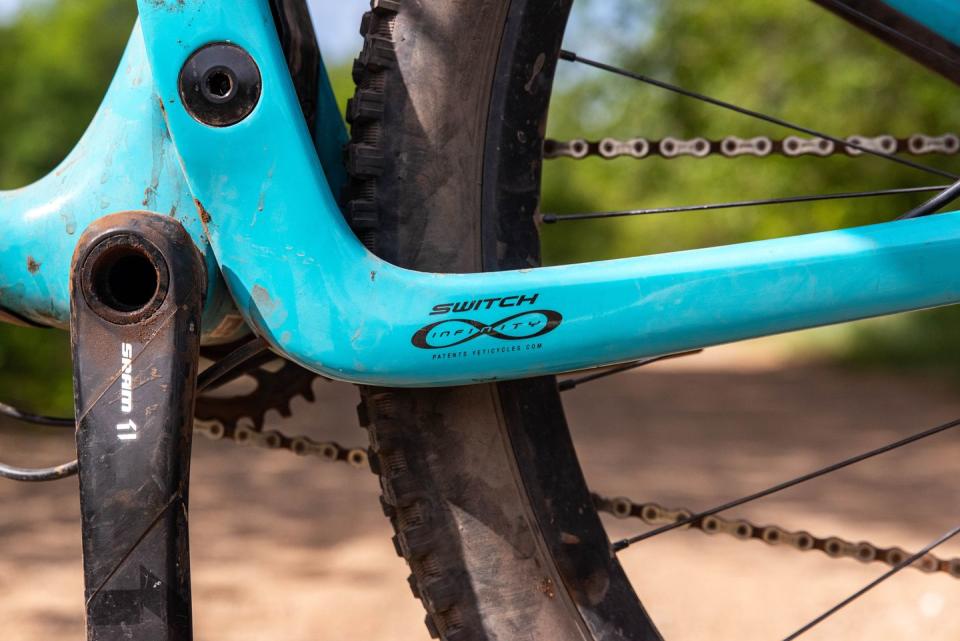
Not Longer, Lower, Slacker
For a couple of years, almost every new mountain bike that rolled out was lower, longer, and slacker than its predecessor. This tilt toward greater stability is a good thing overall, but, as I’ve said before, this trend has compromises—imprecise low-speed handling, a wandering front end on climbs, sluggish handling in tight terrain. And quicker handling isn’t always bad; in fact, it can be beneficial. Besides, if all bikes are low, long, and slack, then none of them are. Differentiation and variety prevent stagnation and helps satisfy the diverse needs of different riders in different regions.
As I mentioned above, the SB115’s geometry is almost identical to the SB100. That bike launched in early 2018, which—considering all the bikes and changes we’ve seen since—seems like an eon ago.
The SB115’s head angle is 67.6, with a 74-degree seat angle. Reach dimensions are comparatively short—a large SB115 has 10mm shorter reach than a medium SB130—although the SB115’s top-tube lengths are somewhat long. Compared to most of the bikes it competes against, the SB115 has shorter reach, steeper head tube angle, and slacker seat tube angle.
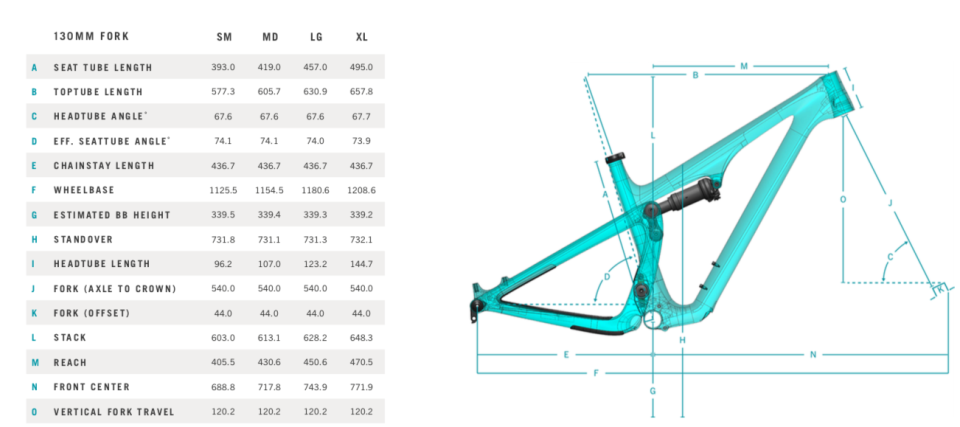
That Yeti didn’t make the SB115 lower, longer, slacker might be surprising and perhaps controversial. I’m sure some riders will write it off immediately because it doesn’t have a 65-degree head tube angle. I’ll admit to being surprised. But I’m also glad because, at the very least, some riders are better served than if Yeti enduroified this little bike.
SB115 Models
There are five complete SB115 models priced from $4,700 to $8,000. The three highest-priced models—T1-$6,300, T2-$6,900, T3-$8,000—use Yeti’s Turq Series carbon, the company’s premium offering. The two lowest-priced—C1-$4,700, C2-$4,900—models use C Series carbon, which, the company claims, offers similar stiffness and durability to the Turq frames, but the C-Series frames weigh about 120 grams more.
C1 and T1 builds use Shimano drivetrain and brakes (SLX and XT, respectively). The C2, T2, and T3 build use SRAM Eagle drivetrains with 10-52 cassettes and G2 brakes.
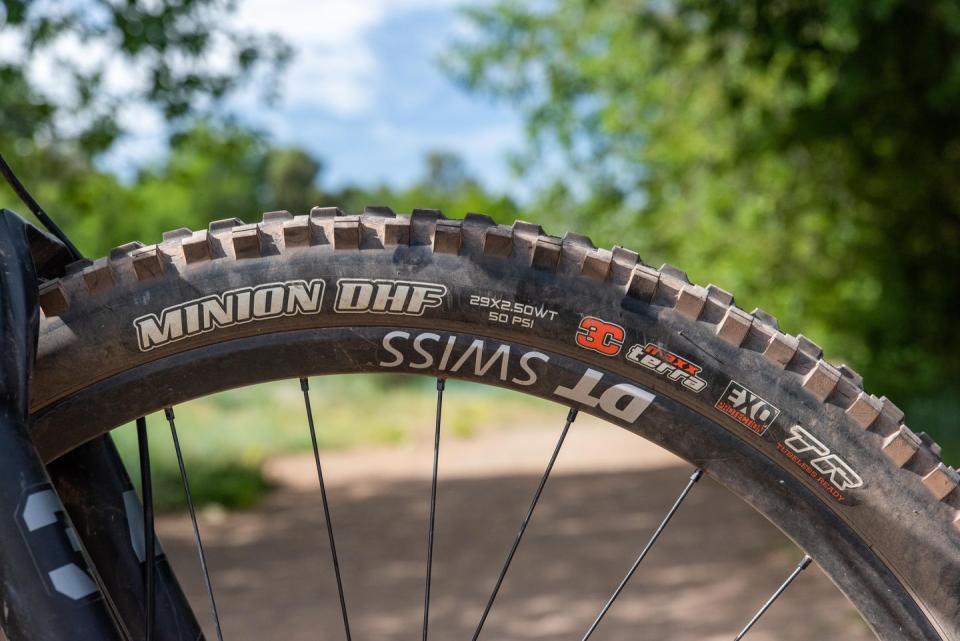
All builds use 1x12 drivetrain, 170mm cranks with a 30-tooth ring, four-piston brakes, 180mm rotors, Fox fork, shock, and dropper, DT-Swiss wheels with 30mm aluminum rims, and Maxxis tires (front-Minion DHF 2.5, rear-Aggressor 2.3).
DT-Swiss 30mm carbon wheels are available as an upgrade for all three Turq models. Yeti offers an AXS upgrade for all three SRAM builds.
The Competition
The SB115 has some heavy competition. Here’s an incomplete list of bikes that you might cross-shop when considering the SB115: Cannondale Scalpel SE, Evil Following, Giant Trance Advanced, Ibis Ripley, Pivot Trail 429, Santa Cruz Tallboy, Specialized Epic Evo, Spot Ryve 115, Trek Top Fuel.

I’d divide the competition into two groups. In one are the Epic Evo, Scalpel SE, Ryve 115, and Top Fuel which are more XC like than the SB115. The other group is longer, slacker and more enduroish: the Following, Trance Advanced, Ripley, Trail 429, and Tallboy.
The SB115 somehow exists between these two groups: softer and more capable than the XC group, quicker and more efficient than the enduroish group.
Ride Impressions
When Yeti said they were sending me an SB115, I was beyond excited. I have an SB100 and an SB130 in my garage, and, though I like both bikes a lot (with a slight overall preference for the SB130), I found the SB100 to be small and the SB130 too big to by my preferred daily driver. I’d been yearning for something right between the two, a beautiful blend of the SB100’s lightness and efficiency with the SB130’s sturdiness and capability.
Without any additional information and based on the model name alone, I imagined something between the SB100 and SB130. So I’ll admit to being disappointed when I discovered that the SB115 is an SB100 with a bit more travel.

But after riding the SB115 for about a month, I’ve let go of my disappointment. Yes, the SB115 is a lot like the SB100—I don’t see enough daylight between the models for both of them to exist—but SB115 is a good bike that can stand on its own merits. But I still think there’s room in Yeti’s line for a bike that’s half-way between the SB100/SB115 and SB130.
The SB115 is an efficient and quicker-handling bike with surprising capability. Lively, poppy, and agile are apt descriptors. This is a bike that moves easily: Press the pedals, and it accelerates crisply, and moves very efficiently; give the bars a light press, and it smoothly drops into a turn. You can steer this bike: turn the bars, and the front tire grips and the bike pivots around its axis, making it perform well on slower-speed trails. This stands in contrast to lower/longer/slacker bikes with sloppy front ends at slower speeds.
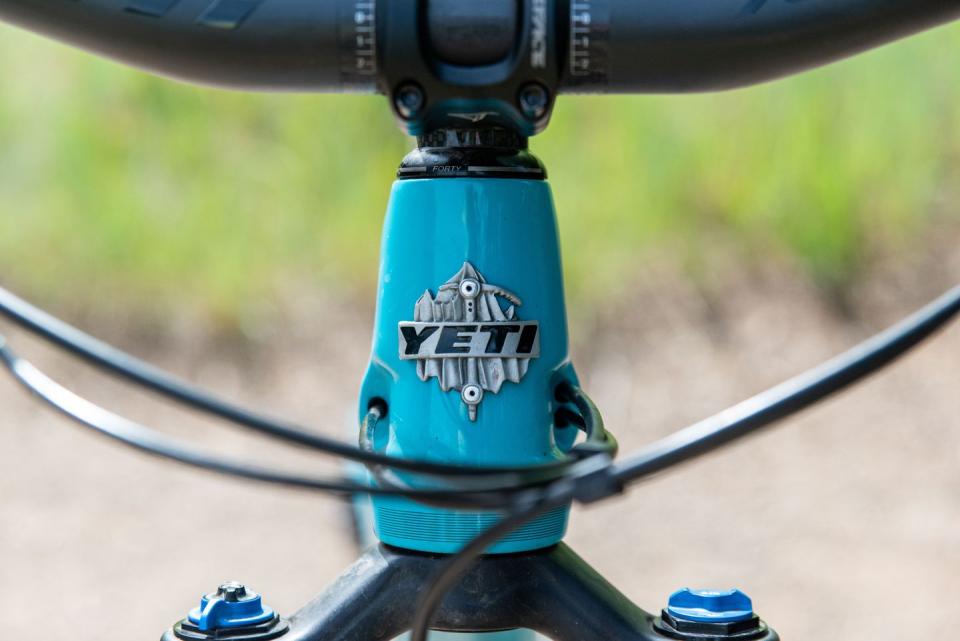
Though it is a quicker-steering bike, the SB115 can be leaned and carved through berms and sweeping corners. This ability to walk the line between slower-speed steering and higher-speed carving gives it more versatility than I expected. However, the SB115 isn’t a bike for plowing through terrain with total abandon: It rewards a smooth rider who is precise with their lines.
The rear suspension is, as I’ve come to expect from Yeti’s Switch Infinity bikes, balanced and well-tuned. Pedaling efficiency is excellent, and the SB115 stays high in its travel with little unwanted movement—this bike accelerates with authority and snaps out of corners. But even though it is very efficient, there’s enough sensitivity remaining in the suspension to track over-steps and roots and keep the bike hooked up.
Coasting and cruising, the rear end is sensitive and controlled, with a supportive mid-stroke that gives the rider something to push off to loft over obstacles or pop up on trail features. There’s a smooth progression at the end of the stroke, which helps this shorter-travel bike hang on admirably when pushed into bigger terrain.
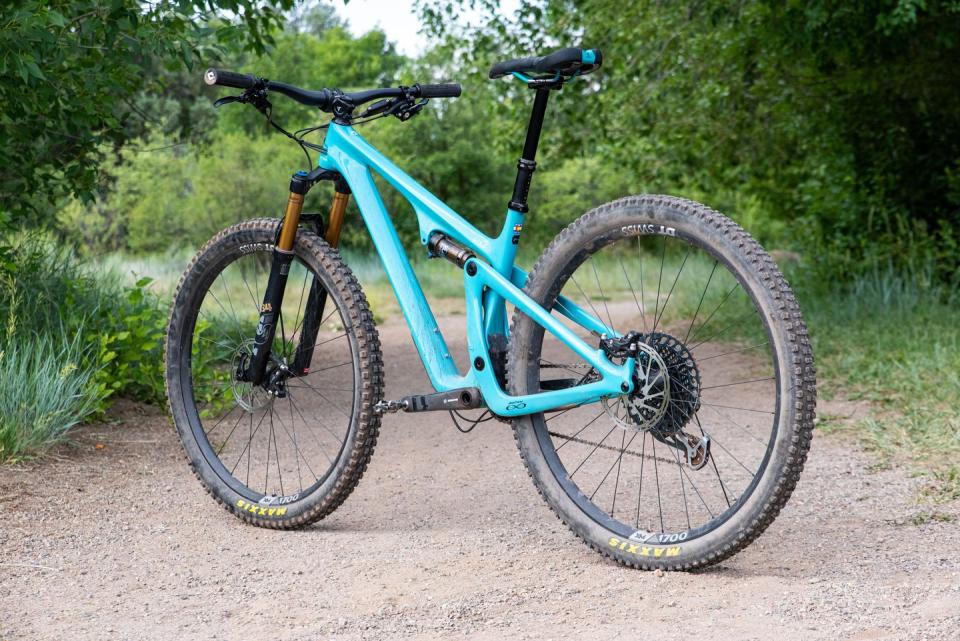
Though there’s a lot to like about the SB115, there are a few shortcomings too. Full frame stiffness is okay, but only just okay. This wouldn't be a huge deal if the SB115 wasn't capable enough to push into demanding terrain. But it is, and I felt it squiggling beneath me a few times. But I will add that I am 180 pounds dressed to ride these days, and I only felt the squiggling on trails where I felt I was reaching the limits of the SB115's capability.
Then there’s the weight. I wouldn’t say the SB115 is heavy, but it is certainly not light. My $6,900 test bike—with the lighter Turq frame and the second-from-top build—was over 27.5 pounds before I added pedals and a bottle cage. In fairness to this SB115, almost all mountain bikes seem to be creeping up the scale these days. Plus the build kit is solid, and was trouble free for the entire test period. Still, the SB115 won’t satisfy riders looking for a light trail bike.
As for who and what the SB115 is for: This is a bike for the rider who wants the faster feel of a shorter-travel bike, something that’s agile and efficient, and a bike at its best in the vast and nebulous space between XC racing and enduro riding. It’s for riders who want a capable trail bike with a healthy dose of sharpness and precision.
You Might Also Like

